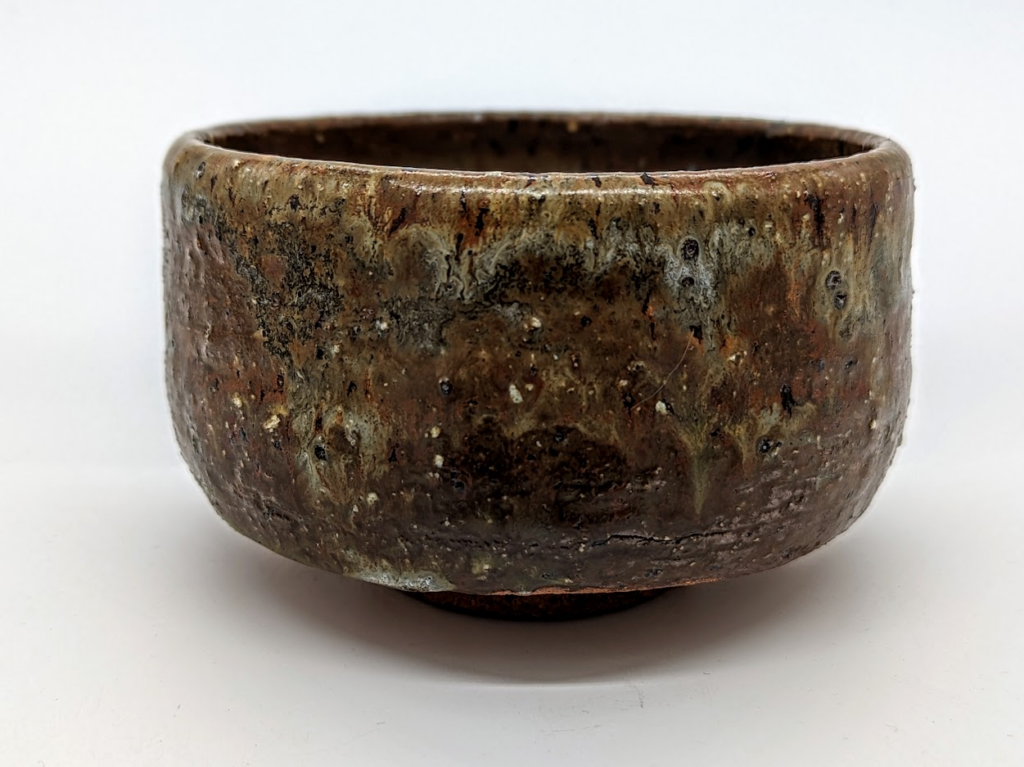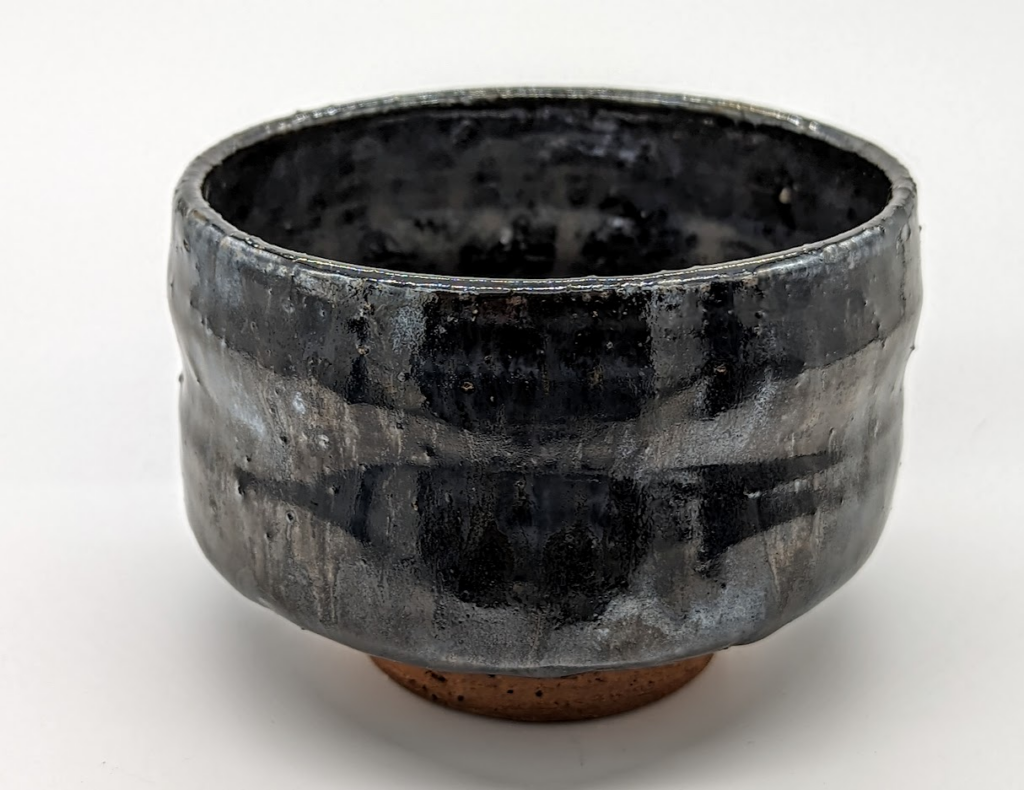I recently had what I would consider a good firing. There were a few outstanding pieces of pottery, lots of okay ones, and a few duds. It was successful in part because of advice shared with me by Ikeda-san.
I met Ikeda-san through one of my students and this is the second time we have fired together. Like me he is an amateur, but an enthusiastic one. We both come from different ceramic traditions, and enjoy talking about pottery. As we’ve spent more time together we’ve begun to start a dialogue about those practices. What immediately stands out are the differences in pottery traditions.

These differences are not only aesthetic but even in the making of pottery. For example, a North American wheel turns counter clockwise. A Japanese wheel turns clockwise. It has to do with the way we kick the wheel. The majority of people are right handed (85-90% according to Google). In the West we kick the wheel away from us with our right foot. In Japan, they kick the wheel inwards towards themselves. This means the dominant hand for Westerners is on the outside of the pot, while for the Japanese it is on the inside.
I would suggest that this is because we Westerners focus outward. We can be loud and enthusiastic. We value novelty and originality. While the Japanese can be quiet and reserved. They value expectations and tradition. One isn’t better than the other. Yet, it is interesting to see how that philosophy manifests itself.
When I learned to throw a pot on a wheel I learned that you never trim the inside of the bowl. That it’s poor form to remove the clay from the inside. In Japan it is the opposite. because the bowl will be in the hand, it is more important that the outside be smooth. For us, you don’t change what is on the inside while in Japan, the outside must remain consistent.
Western pottery places a strong emphasis on functionality. Meaning that the objects created are to serve a practical purpose, such as holding water or food. While it is beginning to change, we don’t generally make items for aesthetic sake only in pottery. We make art, like sculpture; but we don’t make a cup to only look at. If the cup has a crack in it for example, we would throw it out. In Japan the crack might be what makes it interesting. Pots are often made which will never be used.
Western pottery is often symmetrical and geometric, with clean lines and simple shapes. The aesthetic is often described as clean and minimalist. Ikeda-san keeps referring to my work as “Kirei” meaning clean or pretty. There is an emphasis on what I would call perfection. Small blemishes might relegate the piece to the dustbin.

Japanese pottery tends to have a more organic and irregular form. With an emphasis on natural and asymmetrical shapes. The aesthetic often incorporates the concept of wabi-sabi, which values imperfection and transience. If you look at the chawan in the first picture, it was the best thing that came out of the firing. It is rough in places, with small bumps, there is a slight crack along the outside, the glaze is flowing and uneven. But that is what makes it interesting.
When speaking with Ikeda-san, I asked him what he felt was the most important aspect of pottery. He replied, the firing was most important. More important than the glaze used. More important than the shape of the piece. And more important than the type of clay. The fire was the thing that made a piece successful.
In contrast I would argue that the shape is number one in the West. As Jim Malone, put it, “If you have a nice body, you’re fit, then it doesn’t really matter what you wear, you look good.”
After form, the use of glazes is a key characteristic of Western pottery. Often glaze is a decoration. It’s common for Western potters to use a variety of glazes and underglazes.

Japanese pottery in contrast often features a limited color palette. Glazes that are more subtle and nuanced than those used in Western pottery. The glazes are often used to accentuate the texture and form of the object rather than decorate it. In Japan the clay is the second most important thing because it creates the surface.
Even the firing techniques are different. The firing techniques used in Japan are often at a lower temperature for much longer. Some firings last over a week! Western pottery utilizes high-temperature firing techniques, such as stoneware or porcelain. This results in a durable and strong finished product. In contrast, Japan’s protracted firings allow for more subtle changes in colors and textures.
This increased time was the advice given to me by Ikeda-san. I fire in a gas kiln. Usually I would check the kiln and if the cones were down, I would turn it off. He suggested instead that I do a “soak”. I alternated between a reduction atmosphere and oxidization for a few hours. This extra time produced some amazing effects.

In Japan it is common to fire a piece many times until it completed, while in the West it is usually a one shot deal. If it doesn’t come out perfect, it’s garbage.
While Western pottery often emphasizes functionality and simplicity. There is also room for individual expression and creativity. Many artists incorporate unique shapes, textures, and colors into their work. Resulting in pieces that are both beautiful and functional. Originality is important, but there is value in sameness. The creation of a “set” is important.
In Japanese pottery, there is a strong emphasis on tradition. Potters fire in the Shigaraki tradition, or the Bizen tradition or the Mino tradition. There is an expectation of what the outcome will be. Potters are following a particular tradition. That tradition has practices that dictate how you do certain things. And while you are constrained by the tradition, there is value in difference. For example, Raku ware (such as below) is produced one piece at a time, but they only come in red or black. This bowl is one of a kind, but you can tell immediately by looking what tradition it belongs to.

The differences between Western and Japanese pottery traditions go beyond aesthetics and techniques. They are reflective of broader cultural and philosophical values. While Western pottery emphasizes functionality and perfection, Japanese pottery celebrates imperfection and tradition. Both traditions have their own unique beauty and value. As a potter, it’s important to understand these differences and appreciate the beauty in each tradition. As Ikeda-san and I continue to learn from each other, we will create new and exciting forms of pottery that blend the best of both worlds.
